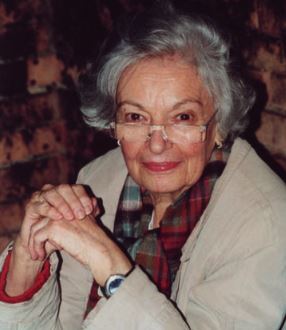The Chalcolithic is an archaeological period characterized by the increasing use of smelted copper. It follows the Neolithic and precedes the Bronze Age. It occurs at different periods in different areas, and is absent in some parts of the world, such as Russia. Stone tools were still predominantly used during this period.
The Iron Age is the final epoch of the three historical Metal Ages, after the Copper and Bronze Ages. It has also been considered as the final Age of the three-age division starting with prehistory and progressing to protohistory. In this usage, it is preceded by the Stone Age and Bronze Age. These concepts originated in describing Iron Age Europe and the Ancient Near East, but they now include other parts of the Old World.

Neolithic architecture refers to structures encompassing housing and shelter from approximately 10,000 to 2,000 BC, the Neolithic period. In southwest Asia, Neolithic cultures appear soon after 10,000 BC, initially in the Levant and from there into the east and west. Early Neolithic structures and buildings can be found in southeast Anatolia, Syria, and Iraq by 8,000 BC with agriculture societies first appearing in southeast Europe by 6,500 BC, and central Europe by ca. 5,500 BC (of which the earliest cultural complexes include the Starčevo-Koros, Linearbandkeramic, and Vinča.

Attersee, also known as Kammersee, English sometimes Lake Atter, is the largest lake of the Salzkammergut region in the Austrian state of Upper Austria. It is Austria's third largest lake by area, surpassed only by Lake Constance and Lake Neusiedl, which, however, both of those larger lakes extend beyond national borders.

Attersee am Attersee is a village on the western shore of Attersee lake in the Austrian state of Upper Austria.

Mondsee is a lake in the Upper Austrian part of the Salzkammergut and near the larger Attersee. Its southwestern shore marks the border between the states of Upper Austria and Salzburg and also between the Northern Limestone Alps in the south and the Sandstone zone of the northern Alps. The Drachenwand (Dragonwall) at the southern shore of the lake is an impressive sight. Mondsee is one of Austria's last privately owned lakes. In August 2008, owner Nicolette Wächter announced it was up for sale.

Mondsee is a town in the Vöcklabruck district in the Austrian state of Upper Austria located on the shore of the lake Mondsee. The town is home to the medieval Mondsee Abbey, whose cloister church was used for the site of the wedding in The Sound of Music.
The Tumulus culture was the dominant material culture in Central Europe during the Middle Bronze Age.
The Blytt–Sernander classification, or sequence, is a series of north European climatic periods or phases based on the study of Danish peat bogs by Axel Blytt (1876) and Rutger Sernander (1908). The classification was incorporated into a sequence of pollen zones later defined by Lennart von Post, one of the founders of palynology.
The Pfyn Culture is one of several archaeological cultures of the Neolithic period in Switzerland. It dates from c. 4300 BC to c. 3500 BC.

Ghassulian refers to a culture and an archaeological stage dating to the Middle and Late Chalcolithic Period in the Southern Levant. Its type-site, Teleilat Ghassul, is located in the eastern Jordan Valley near the northern edge of the Dead Sea, in modern Jordan. It was excavated in 1929-1938 and in 1959–1960, by the Jesuits. Basil Hennessy dug at the site in 1967 and in 1975–1977, and Stephen Bourke in 1994–1999.

The chronology of the ancient Near East is a framework of dates for various events, rulers and dynasties. Historical inscriptions and texts customarily record events in terms of a succession of officials or rulers: "in the year X of king Y". Comparing many records pieces together a relative chronology relating dates in cities over a wide area.
The Horgen culture is one of several archaeological cultures belonging to the Neolithic period of Switzerland. The Horgen culture may derive from the Pfyn culture and early Horgen pottery is similar to the earlier Cortaillod culture pottery of Twann, Switzerland. It is named for one of the principal sites, in Horgen, Switzerland.

Prehistoric pile dwellings around the Alps are a series of prehistoric pile dwelling settlements in and around the Alps built from about 5000 to 500 BC on the edges of lakes, rivers or wetlands. In 2011, 111 sites located variously in Switzerland (56), Italy (19), Germany (18), France (11), Austria (5) and Slovenia (2) were added to the UNESCO World Heritage Site list. In Slovenia, these were the first World Heritage Sites to be listed for their cultural value.

Grossner Hafner is one of the 111 serial sites of the UNESCO World Heritage Site Prehistoric pile dwellings around the Alps, of which are 56 located in Switzerland.

Rapperswil-Jona/Hombrechtikon–Feldbach or commonly Seegubel is one of the 111 serial sites of the UNESCO World Heritage Site Prehistoric pile dwellings around the Alps, of which are 56 located in Switzerland.

Greifensee–Storen–Wildsberg is one of the 111 serial sites of the UNESCO World Heritage Site Prehistoric pile dwellings around the Alps, of which are 56 located in Switzerland.

Elisabeth Ruttkay was a Hungarian-born, naturalized Austrian citizen, who was an archaeologist specializing in New Stone Age and Bronze Age studies in Austria. She was the winner of both the Lower Austria Promotion Prize and the Austrian Cross of Honour for Science and Art.
Norşuntepe is a tell, or archaeological settlement mound, in Elazığ Province (Turkey). The site was occupied between the Chalcolithic and Iron Age and is now partially submerged by Lake Keban. It was excavated between 1968 and 1974.




















